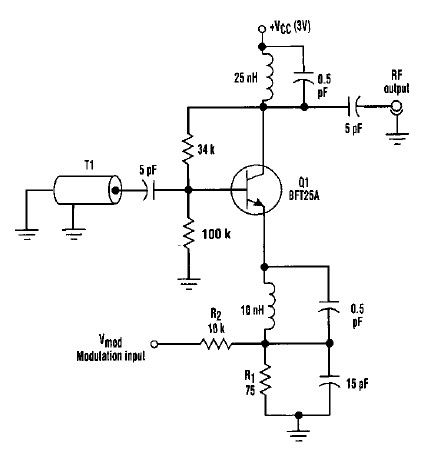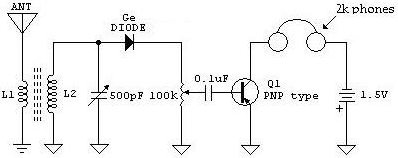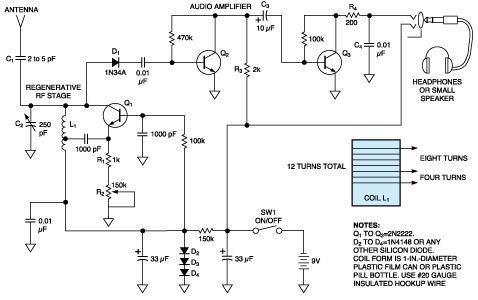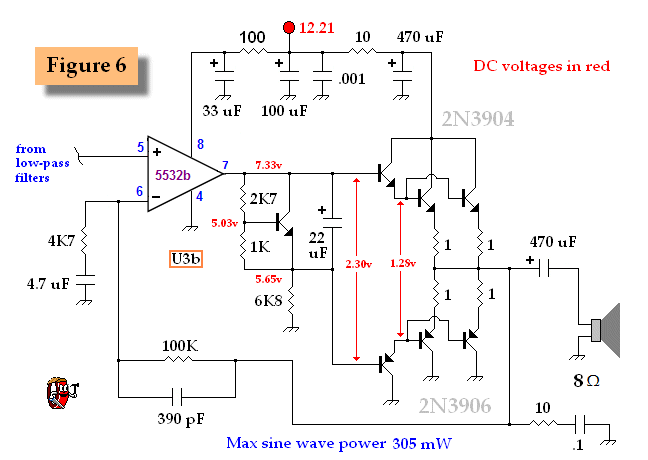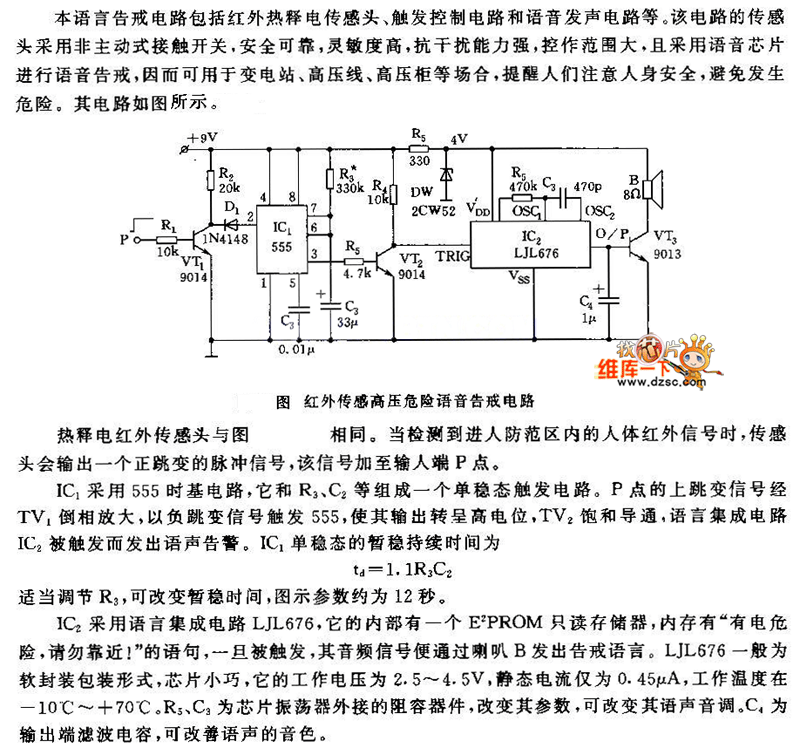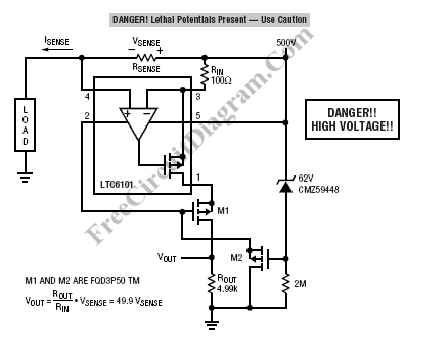
High Selective Regenerative Shortwave Receiver
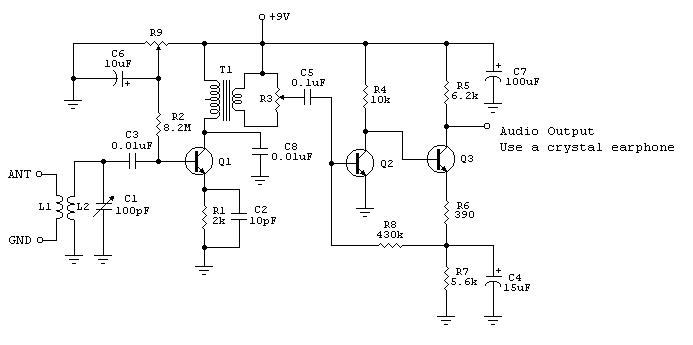
The circuit was designed to create a portable and sensitive regenerative receiver suitable for shortwave band listening.
The regenerative receiver circuit is engineered to operate effectively within the shortwave (SW) frequency range, which typically spans from 3 MHz to 30 MHz. This design utilizes a feedback mechanism to enhance sensitivity and selectivity, making it particularly adept at picking up weak signals that are characteristic of shortwave broadcasting.
Key components of the circuit include an RF amplifier stage, a regenerative detector, and an audio output stage. The RF amplifier is crucial for boosting incoming radio frequency signals, while the regenerative detector converts these signals into audio frequencies. The feedback loop in the regenerative stage is carefully tuned to optimize gain without introducing excessive distortion, allowing for clear audio reproduction.
The circuit's portability is achieved through the use of low-power components, enabling it to be powered by batteries. This makes it suitable for outdoor use or in locations where access to power sources is limited. Additionally, the design may incorporate a compact tuning mechanism, such as a variable capacitor, to allow users to easily adjust the frequency and lock onto desired stations.
Overall, this regenerative receiver circuit is an excellent choice for enthusiasts of shortwave listening, providing a balance of sensitivity, portability, and ease of use.The circuit was designed to create a portable and sensitive regenerative receiver that will be suitable for shortwave band listening. Shortwave (SW) a t.. 🔗 External reference
The regenerative receiver circuit is engineered to operate effectively within the shortwave (SW) frequency range, which typically spans from 3 MHz to 30 MHz. This design utilizes a feedback mechanism to enhance sensitivity and selectivity, making it particularly adept at picking up weak signals that are characteristic of shortwave broadcasting.
Key components of the circuit include an RF amplifier stage, a regenerative detector, and an audio output stage. The RF amplifier is crucial for boosting incoming radio frequency signals, while the regenerative detector converts these signals into audio frequencies. The feedback loop in the regenerative stage is carefully tuned to optimize gain without introducing excessive distortion, allowing for clear audio reproduction.
The circuit's portability is achieved through the use of low-power components, enabling it to be powered by batteries. This makes it suitable for outdoor use or in locations where access to power sources is limited. Additionally, the design may incorporate a compact tuning mechanism, such as a variable capacitor, to allow users to easily adjust the frequency and lock onto desired stations.
Overall, this regenerative receiver circuit is an excellent choice for enthusiasts of shortwave listening, providing a balance of sensitivity, portability, and ease of use.The circuit was designed to create a portable and sensitive regenerative receiver that will be suitable for shortwave band listening. Shortwave (SW) a t.. 🔗 External reference
